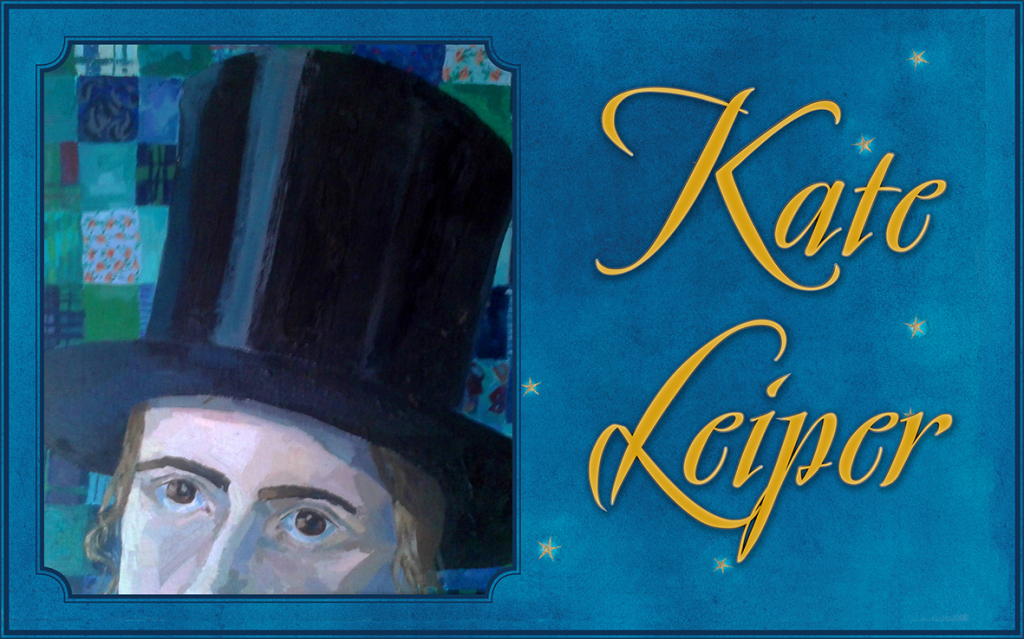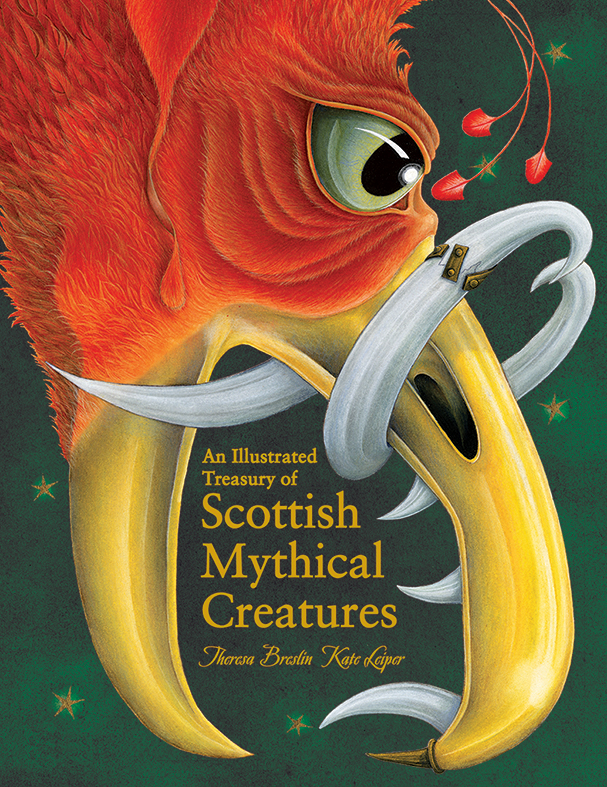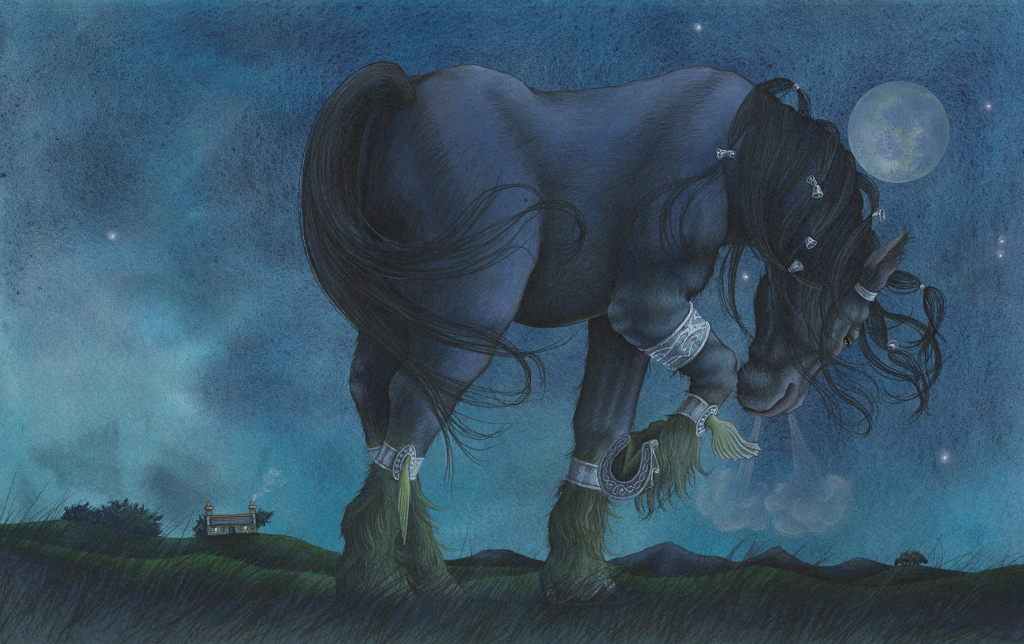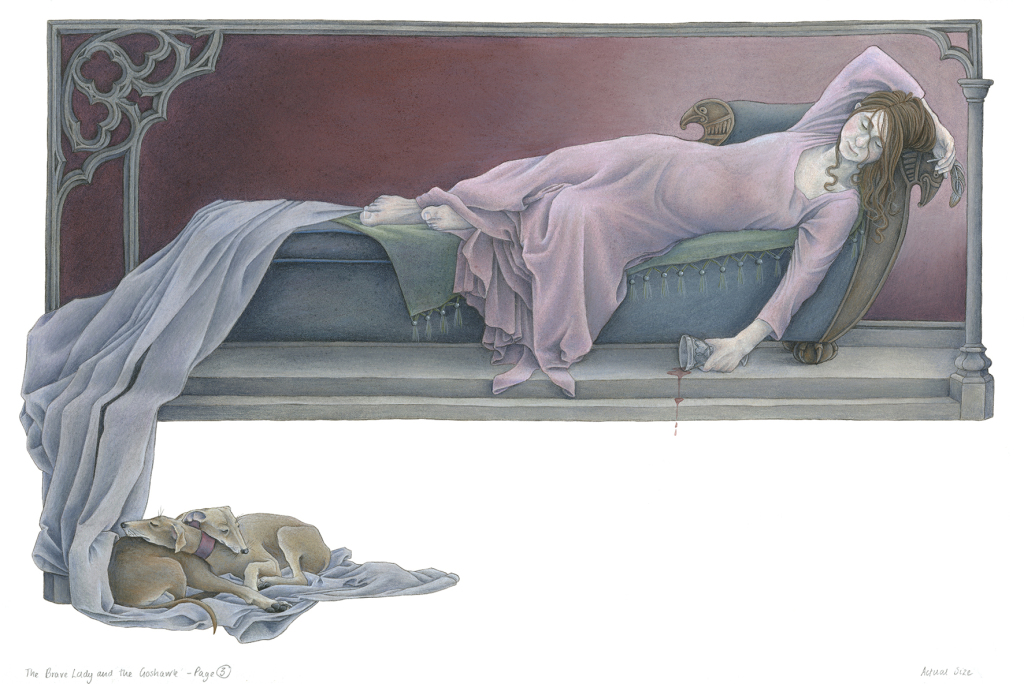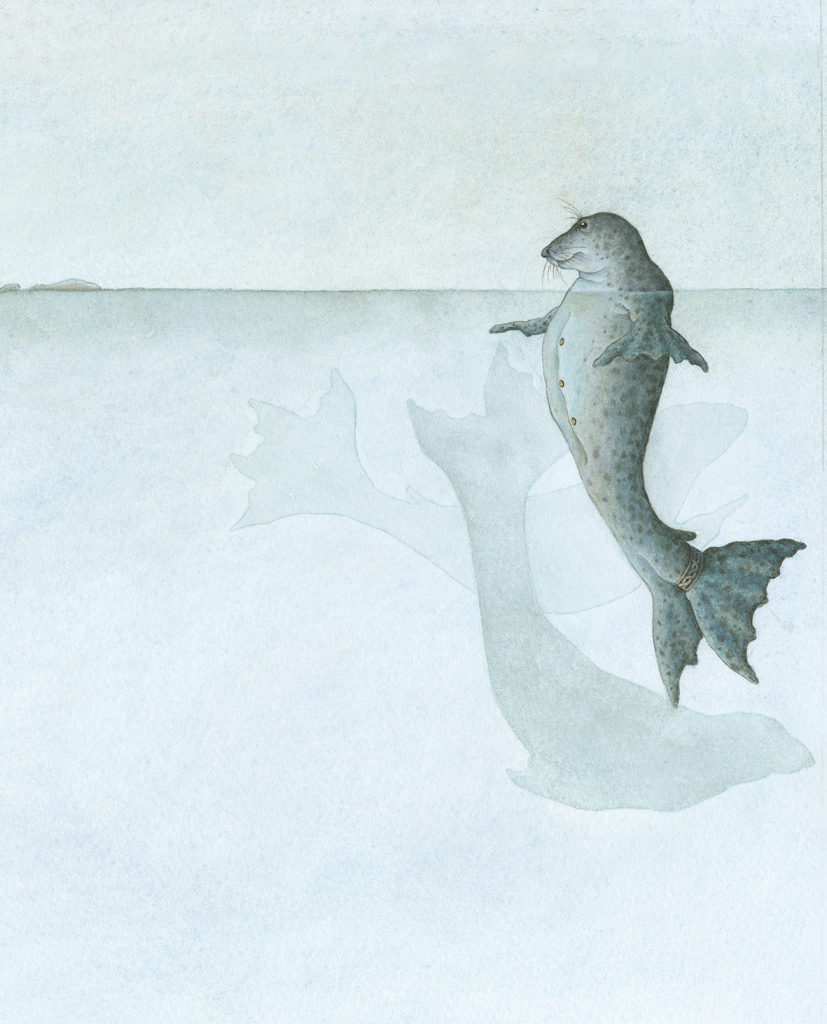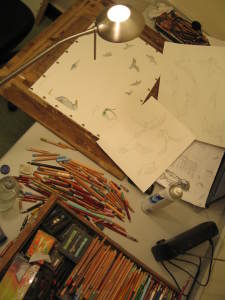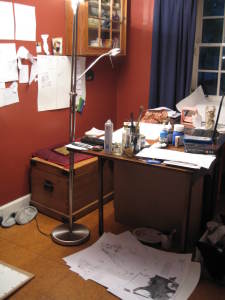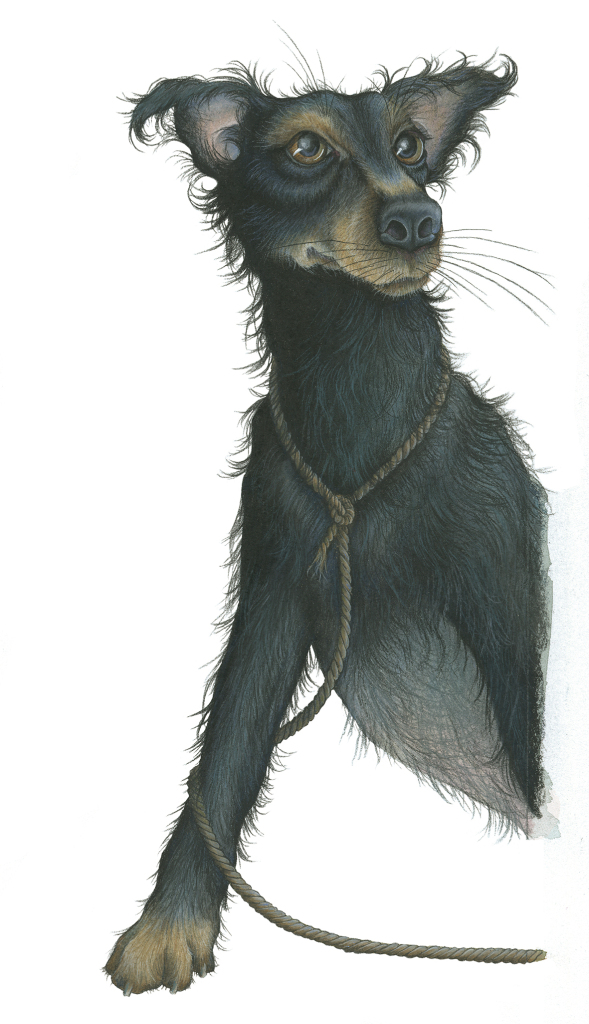#FlorisDesign Illustrator Interview: Kate Leiper
by Floris Books • 29 October 2014 • Children's Books, Design and Illustration, Floris Design • 0 Comments
Illustrator of…
Last week during our Twitter take-over, #FlorisDesign brought you some of our favourite images from The Illustrated Treasury of Scottish Folk and Fairy Tales and this week we were lucky enough to have a face-to-face chat with the artist, the wonderful Kate Leiper. Read on to find out about her inspiration, her thoughts on folktales and why she loves drawing blobby seals!
So first things first, what made you want to become an artist?
I’d never really thought that I wouldn’t do art. My school had a careers advice service discouraged it, instead suggesting vocations involving science or maths. They believed that I could do with art was to be a teacher. I know that some people were also discouraged by their family, but luckily I never had that problem.
Well that’s good; are either of your parents artists?
No, but my dad was a town planner and studied at Duncan of Jordanstone in Dundee. Because of that he knew a lot of artists so it didn’t seem weird to him. Also, both of my parents were interested in art.
So it wasn’t like telling them you were going to Hogwarts?!
Haha no! But I had arty friends at school whose parents were like that and many of them ended up avoiding art as a career.
Now how much of what you draw comes from imagination and how much is from research?
I tend to picture things in my head first but then have to go do some research, whether it’s looking on the internet, going to the library or visiting a museum. If I’m drawing human figures I often just do the pose myself and take selfies!
It’s a great idea! With human figures it’s often the subtleties of form that make figures look truly human, though they don’t necessarily occur to us as being important. If you don’t get something quite right, it can be really obvious.
Yes, because we’re all familiar with the human figure, if you do something wrong it’s really obvious to everyone. And just because we’re familiar with how they should look, it doesn’t mean to say we instinctively know how it should be drawn. Even if I’m drawing a child, I’ll still do the pose but just play around with the proportions to get it to work.
It’s a good idea to have references but I know they’re not always so easy to find. I remember you telling us recently that you were on the hunt for a Shetland pony to photograph for the new Illustrated Treasury of Scottish Mythical Creatures because you couldn’t find one on the internet.
Well yes, because they’re so little most photos of them are taken from above! I wanted a Shetland pony straight on so it was a bit of a hassle but we got there in the end, thanks to an obliging pony!
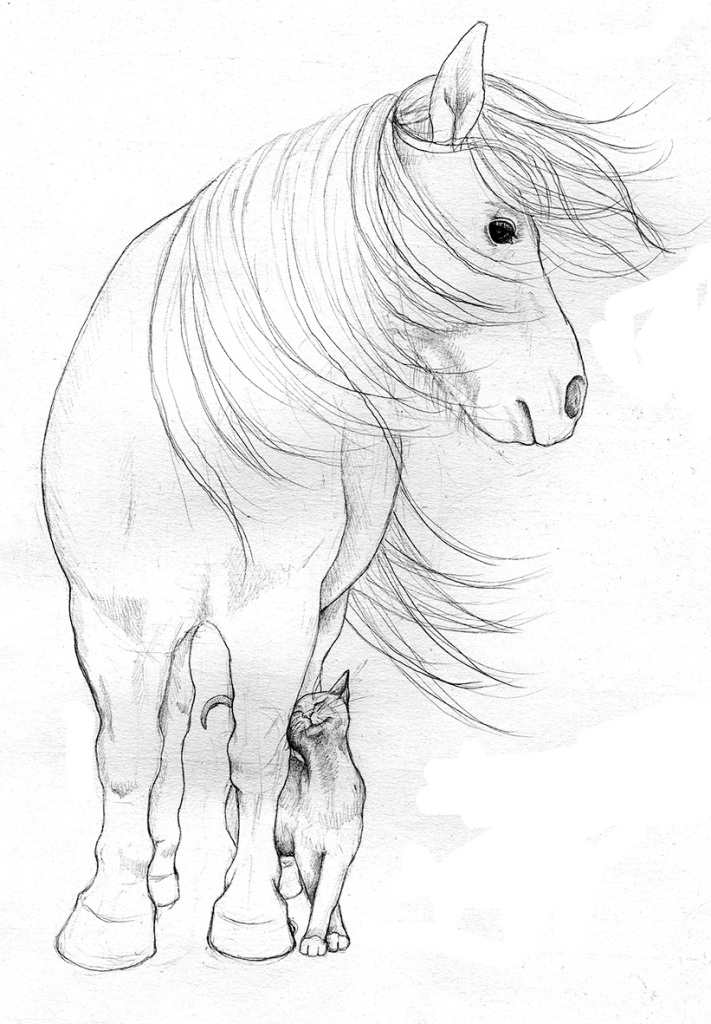 Brilliant! What was his name?
Brilliant! What was his name?
I don’t know, I just met him in a field!
So aside from hunting for tiny ponies, have you found any new sources of inspiration for the new Illustrated Treasury volume?
Not really, mainly because for me most of the inspiration is already there in the text. The difficult thing is choosing which ideas and images to illustrate. A lot of the stories in the new volume are based by the sea or water, and since water themes are often featured in folklore that inspires me too.
We know you’re the perfect match for these books because a lot of your personal work seems to be driven by and inspired by folktales.
Yes. Also, my dad sings a lot of folk music and I think some of the ballads have inspired me. I remember when I was little I would often get lost in the ballads and imagine scenes from them. And also, being Scottish myself, the folklore background is already there.
That’s true; you would have grown up with them.
Yes, I certainly knew some of the stories after hearing ballads at home. Selkies, for instance, are better known now amongst school children but I didn’t know them when I was little. Although I think there’s more of an awareness of Scottish culture in schools now.
What is it that draws you to the subject matter of folk tales?
The variety of them and the different purposes they serve. Some are fairy stories meant to entertain but some also serve a social function. For example, selkie stories often come from fishing villages and communities where a lot of people, especially men, would have been lost to the sea. At a time where there was no social security or understanding of mental health, a breakdown would have had a real stigma attached to it. I think the idea of selkies being the souls of drowned fishermen could have had a protective function, giving people the hope that their loved ones weren’t completely lost and preventing them from losing their minds with grief.
Also, if somebody had ended their own life, they wouldn’t be able to be buried in church grounds as it was seen to be a sin, so their soul would be unprotected. However, if say, a Kelpie had tempted you into the water, this wouldn’t constitute suicide and you would be able to be buried there.
That’s a really interesting idea. We’d never really thought about why folk tales had come about other than as a form of entertainment.
That’s just my theory. Since folktales tend to be universal in one form or another it would suggest they’re doing something more than just entertaining people.
For instance, another theme that occurs a lot is one of young girls getting married off to ogres. The Rashie Coat from the first Illustrated Treasury is a Scottish Cinderella story about a girl who was going to be married to a man against her will. She is set tests in order to try and escape him and eventually marries the man of her dreams instead. Now for young girls who were force into arranged marriages the prospect must have seemed like marrying a monster or an ogre. But if they knew of a heroine who’d experienced the same thing but had a happy ending, it might have given them comfort.
That makes sense and is a really nice idea. Now which of the first Illustrated Treasury stories gave you the strongest visual image?
Selkies! I really like the selkie stories.
Good job there’s one in the new Illustrated Treasury of Scottish Mythical Creatures then!
Yes!
So where do you like to work?
Well I’ve got a choice, either at home or in the studio space I’ve recently found. At home it’s nice to roll out of bed, keep your warm jammies on and to just start working, but it’s also nice to go to a place where other people are around and you can go for a coffee. Both definitely have their advantages.
It’s great to have a choice; it means you can suit your mood depending on the day. Now, do you have a favourite thing to draw?
Definitely dogs. I like dogs a lot. I like seals too because they’re blobby and easy to draw! I like the characters dogs have and there are so many breeds that you can always choose a breed to depict the character you want to represent.
Is there any advice you wish you could give to your younger artist-self?
I think I held back from trying to get illustration work because I was scared of rejection, so I’d encourage my younger self to have confidence in making a living from artwork and take calculated chances. You never know where art will take you.
Kate studied at Gray’s School of Art in Aberdeen. To see more of her stunning work you can visit her website.
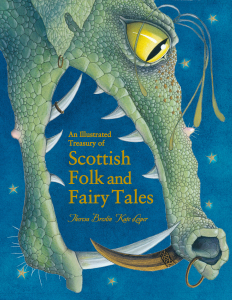 Click on the cover for more info on The Illustrated Treasury of Scottish Folk and Fairy Tales and to use our exciting See Inside feature!
Click on the cover for more info on The Illustrated Treasury of Scottish Folk and Fairy Tales and to use our exciting See Inside feature!
